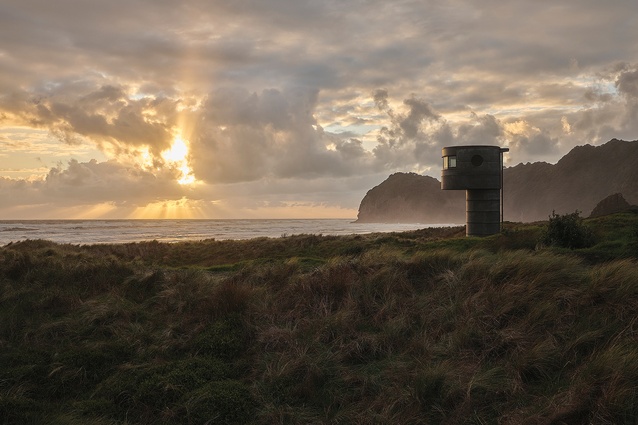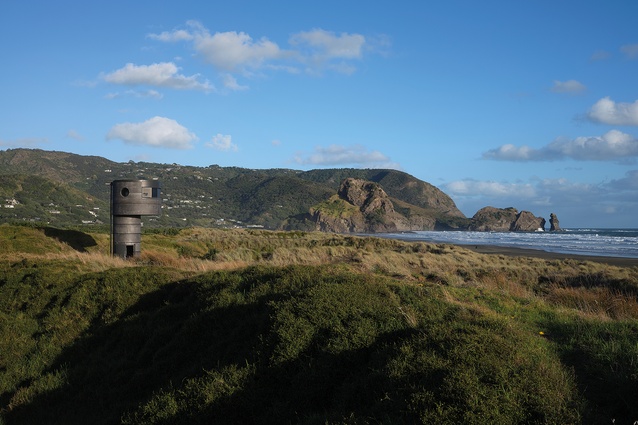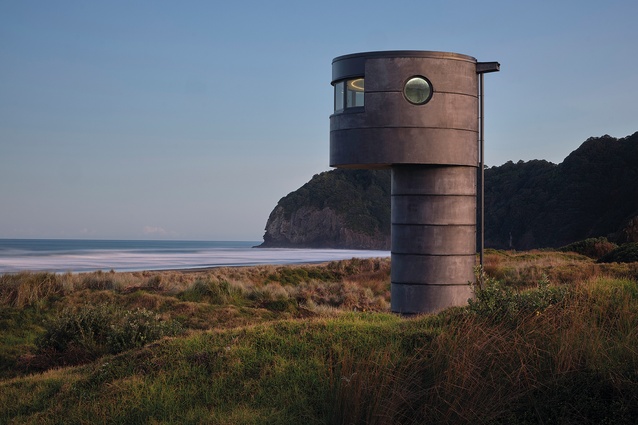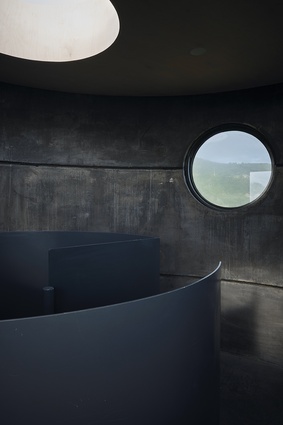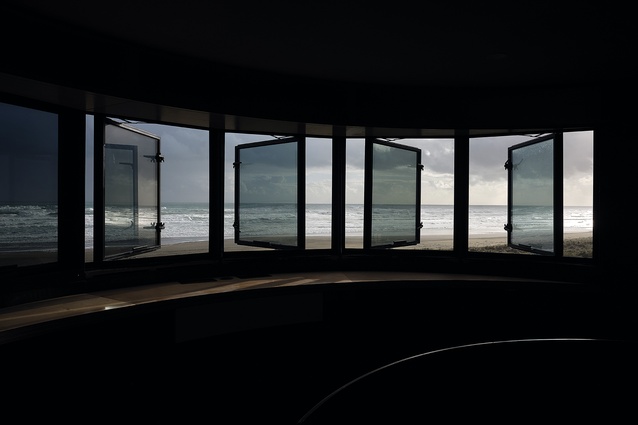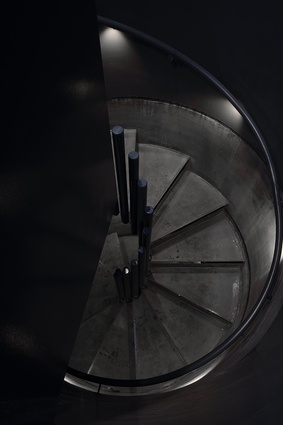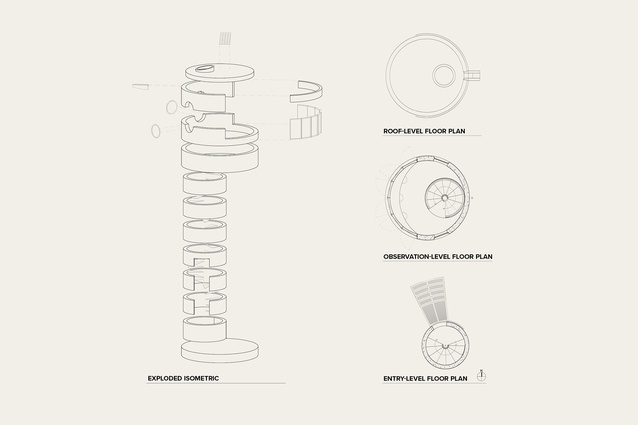Sand-hills sentinel: Te Pae North Piha Lifeguard Tower
NEW ZEALAND BEACHES ARE DANGEROUS. Really dangerous. More dangerous than it is being an architect (although they share the risk of public exposure). New Zealand beaches were even more dangerous again if you were Māori in 1769 and a funny-looking waka was heading your way.
They were still dangerous in the 1980s, when vile acts of violence by a few who had sworn to uphold the law coloured some Bay of Plenty beaches in half-fear. I couldn’t look at a surf club tower for 15 years without feeling ashamed for the police.
I was reminded that a surf tower could carry pain as well as hope in the pages of a local newspaper recently: “… what a terrible ‘ting’ to have in the sand dunes”, “…how dare such a ‘ting’ occur during a supposed time of sensible sustainability…” And so it went on, lambasting not surfside lawlessness in North Piha but architecture. All I could think was: FFS (Failure of Free Speech).
As children, Dad had said to us, “God gave a person a finite number of words to use in a lifetime. Choose them wisely; don’t waste them on rubbish thoughts.” That made good sense when I was 11. It still makes good sense at 50.
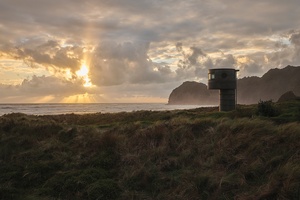
Dad was an Irish immigrant who left behind the damp, Celtic lilt of inexhaustible story-mongering to dedicate his allotted words to highly inappropriate jokes, and we loved him for it. His literary hero wasn’t James Joyce, Samuel Beckett or even Spike Milligan, but Muhammad Ali. Dad reckoned it wasn’t because of Parkinson’s disease that Ali lost the ability to speak late in life but because he had used up his allowance in his brilliant youth.
Late in his own life, Dad showed he could move with the times by upgrading his metaphor to the 21st century. The mind, he declared, is just a motherboard with limited storage capacity. There’s no point in filling it up with rubbish; you just need to make sure that the bad memories are bumped off by good ones.
As kids, we went to the beach but the only lifeguard tower I really remember from my childhood is the one whose stair Pamela Anderson ran down in Baywatch. Pamela made the possibility of drowning seem almost fun and it took a much later political documentary titled Borat to remind me that, without Pamela, and a tower, that TV phenomenon would have been called Bay****.
As a child, I would occasionally climb into an especially nautical tree, imagine I was good at swimming, and let my mind go to the heroes that are lifesavers, like Pamela and the beautiful altruists of Bondi Rescue, about whom I can’t imagine the locals complaining. I set off to Piha to see for myself.
First thoughts: Russian bus stop in rural Bashkortostan. Maybe the motherboard just made room for a whole new seaside typology?

I rang Ken and said “Ka pai on da Te Pae ting, e hoa”. Ken said, “Eh?” I said, “Ken, have you seen the Church of Sainte Bernadette of Banlay, Nevers, in France? The one by Paul Virilio and Claude Parent. The one that looks like they stole their ideas off Albert Speer’s designs for the Atlantic Wall defences of World War Two” (which they did). And Ken said, “Eh? But did you know it’s just been short-listed for an award as one of the best buildings in the world?” I did not. One of the best buildings in the world. Of course it was. Like Le Corbusier, I went for a swim to think about it.
It was cold. Really FFS (Finnish Frontier Swimmers) cold. I imagined the worst, also ending like Corb. I am reaching my last few breaths and I’m losing the fight in the water. A seventh-wave spear tackle takes my legs and panic starts to become comfortable. I try flailing my arms around my head in a way that suggests “I might be going to die” but with a “not to bother you too much” kind of vibe: a desperate last act to capture the attention of a stranger interested in saving what’s left of my soul after decades of architectural practice.
The Atlantic Wall didn’t blink. And yet I felt calmer, as though its monolithic disinterest was a backhand compliment to the usefulness of an unsyncopated helicopter stroke to rout a West Coast rip tide. I wade towards the ‘ting’ lurking in the dune-coloured dunes. (Full disclaimer: I went only waist deep.) Is my hero in there? I squint. I can’t see them. Can they see me?
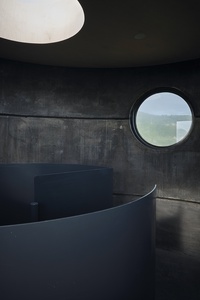
It’s hard for architecture to be heroic. When a firefighter is heroic, a building burns to death. When a police officer is heroic, it’s often because a door or window failed to do its job. When we call an architect heroic, it’s because they are trying to build something we all know is completely doomed. The more heroic an architecture, the less hopeful the outcome. Look what happened to Rua Kēnana’s heroic brilliance at Mangapōhatu.
Ken must know about Hīona. Is that why he aligned a circular skylight with the lower column? But why did he reduce the circular form at the base? Why does he have two circular windows on one side? Why did he put the ladder inside and not display it externally? Why does he discharge the water towards the land rather than the sea? And why did the sea discharge water to my rear, leaving my shorts uncomfortably filled with sand? So many important questions.
I squint again at this alien ‘ting’ nesting in Aotearoa’s coastal tussock and I think, what a ‘ting’ it must be to be the architect able to come up with this beautiful ‘ting’. A totemic Niu pole around which the sand, sun and sea constantly bicker like children. And I hear the whisper of Dad’s accent; choose your words wisely, architects.
The United North Piha Surf Lifesaving Club are currently fundraising for money to enable the rebuilding of their clubhouse. To support them you can donate here.
Te Pae Lifeguard Tower has been shortlisted for a 2022 World Architecture Festival award. To read about this and what other projects made this year’s shortlist, click here.

